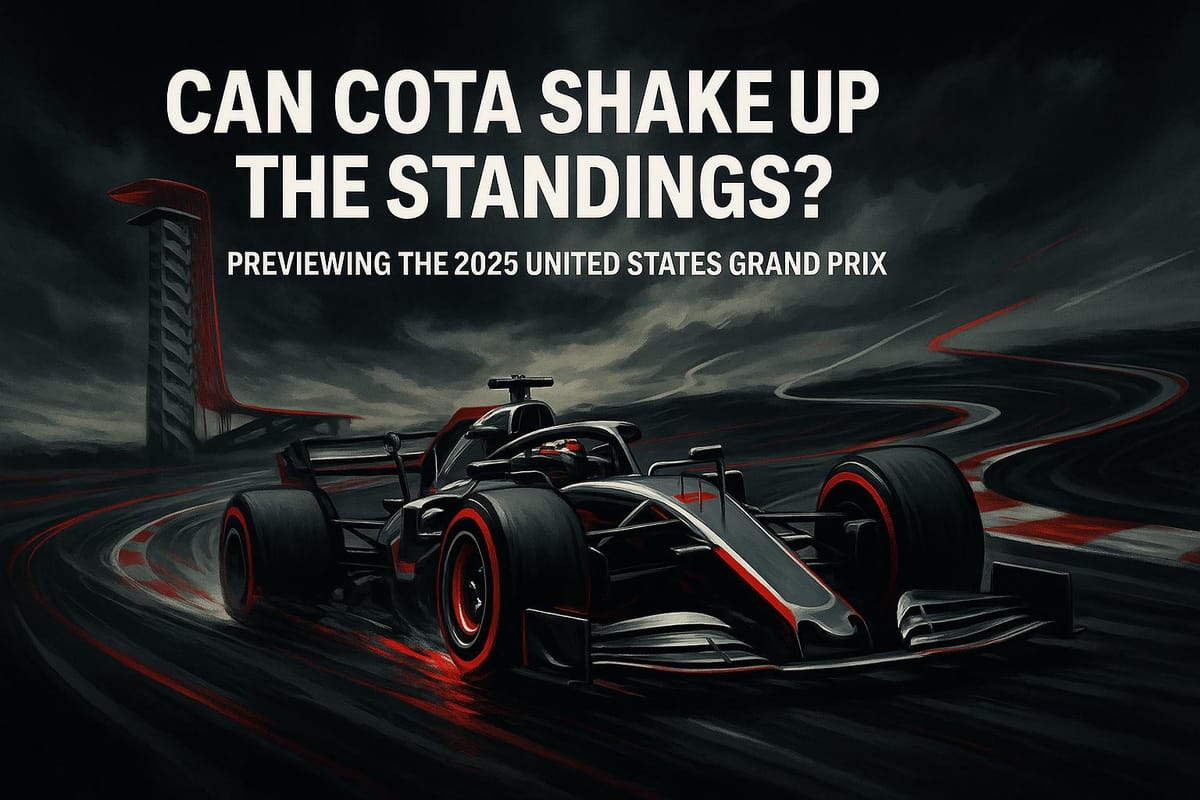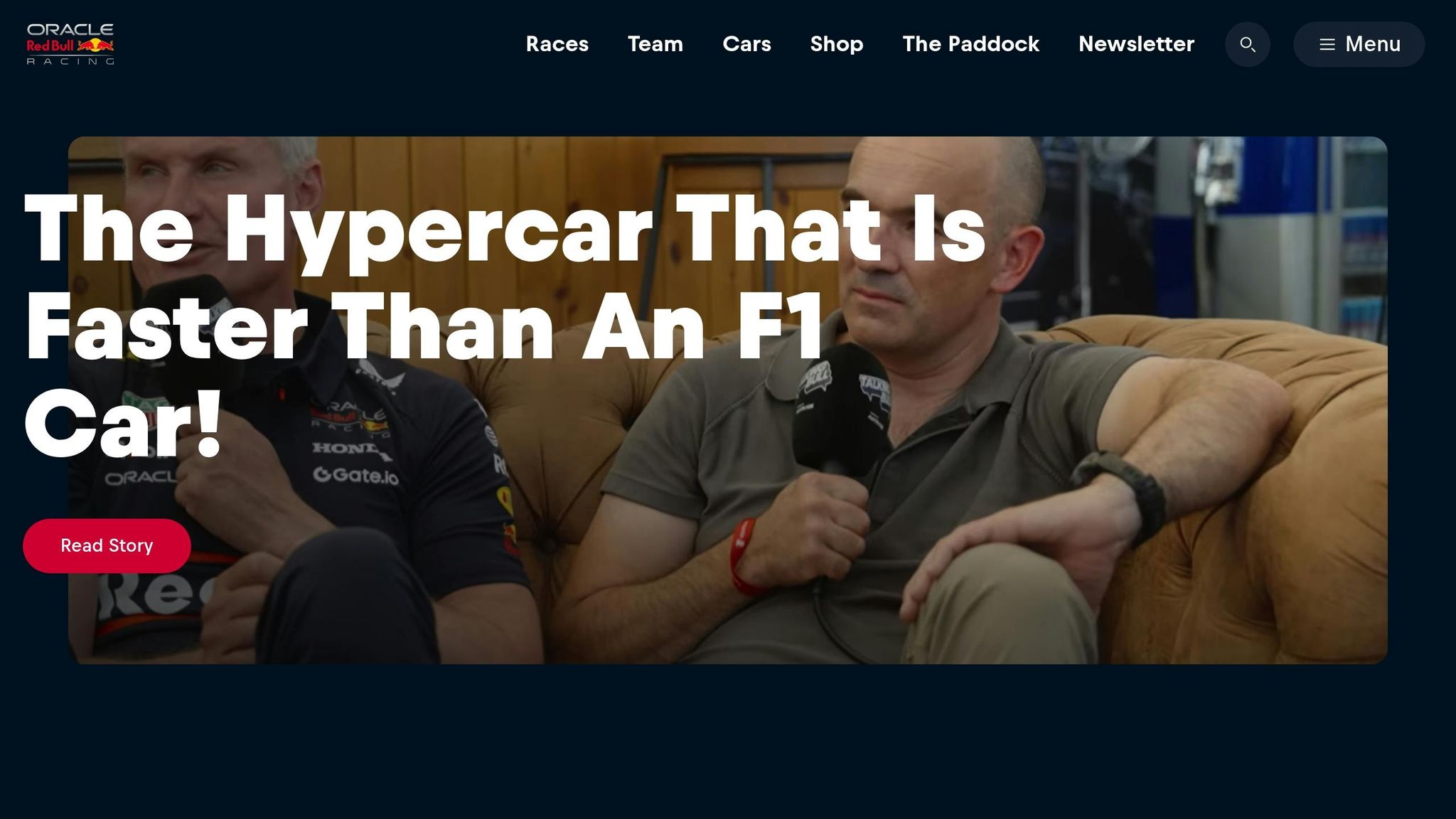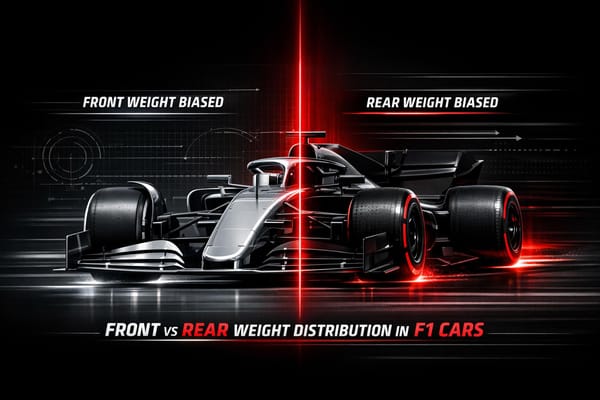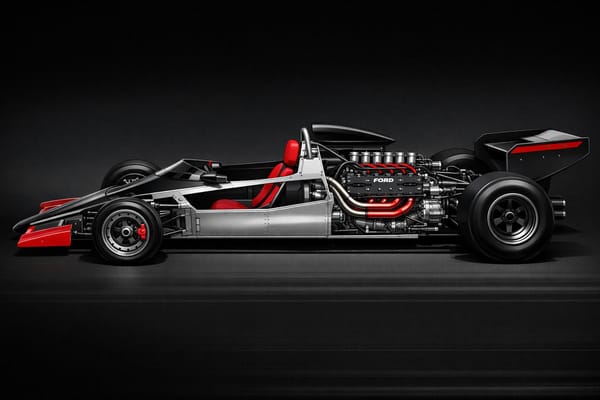Can COTA Shake Up the Standings? Previewing the 2025 United States Grand Prix
The 2025 United States Grand Prix at COTA could disrupt the championship standings, with weather, track layout, and strategies playing crucial roles.

The 2025 United States Grand Prix at COTA could redefine the Formula 1 championship race.
Taking place from October 17–19, this event is a critical late-season opportunity for teams to gain or defend points. COTA’s challenging 3.426-mile track, inspired by iconic circuits like Silverstone and Suzuka, demands precise car setups and sharp strategies. The introduction of the Sprint format adds extra points and complexity, while unpredictable October weather in Austin could further disrupt plans.
Key takeaways:
- Track Layout: 20 corners, 131-foot elevation change, and overtaking zones at Turns 1 and 11.
- Weather: High temps (77-82°F average, but up to 91°F) and crosswinds impact tire performance.
- Past Results: Max Verstappen dominated 2021-2023, but Ferrari broke through in 2024 with Leclerc’s win.
- Tire Strategy: Medium compounds are crucial, with two-stop strategies likely due to high degradation.
COTA’s unique demands and timing in the season make it a prime stage for surprises. Teams must balance car setups, weather adjustments, and tire choices to emerge on top.
Red Bull to challenge McLaren at COTA? 2024 United States GP Preview

1. Circuit of The Americas (COTA) Track Layout
The Circuit of The Americas is one of Formula 1's toughest and most exciting tracks, stretching 3.426 miles (5.513 kilometers) with 20 corners and a dramatic 131-foot (40-meter) elevation change. Its design borrows ideas from legendary circuits: the fast-flowing esses mirror Silverstone's Maggotts-Becketts section, tighter corners evoke Hockenheim's stadium layout, and the Turn 16-18 sequence pays homage to Istanbul Park's famous quadruple-apex corner. The mix of high-speed straights and intricate corners demands precise car setups and heavily influences race-day strategies.
The track's elevation changes add another layer of complexity, affecting aerodynamics and car balance. Richard Mills, vice president of operations for Austin Bridge & Road, L.P., highlighted the engineering hurdles:
"The amount of stress this pavement will undergo is tremendous... It's not downward stress; it's shear stress. So, as a result, the specifications for paving are extremely stringent."
Race Strategy Impact
COTA's layout offers plenty of opportunities for overtaking, especially at Turn 1 and Turn 11. These features force teams to carefully balance track position with tire performance, particularly over long stints. The circuit's varied demands take a toll on tires - high-speed sections can cause overheating, while the straights provide some cooling. This constant push and pull often leads to two-stop strategies.
Mario Isola, Pirelli's head of motorsport, explained the challenge:
"This circuit has a bit of everything... Setting up the car properly for a long stint is probably more complicated than other circuits that are all stop-and-go."
Past Performance Data
COTA's unique characteristics have shaped the records of top drivers. Lewis Hamilton leads with five wins (2012, 2014-2017), while Max Verstappen has dominated recently, winning the last three races (2021-2023). Sebastian Vettel earned one victory in 2013 and holds the record for the most fastest laps at the track with five. Meanwhile, Charles Leclerc set the lap record with a time of 1:36.169.
The track rewards drivers who excel in car control and strategic thinking. Hamilton's success is often linked to his ability to manage tire wear without sacrificing speed, while Vettel has described the satisfaction of nailing a perfect lap at COTA. In recent years, Red Bull's dominance, led by Verstappen, shows how their car design thrives under the circuit's diverse demands. COTA remains a true test of both driver skill and team strategy.
2. Weather and Track Conditions
October in Austin brings a mix of challenges for teams at Circuit of the Americas (COTA). During mid-October, average high temperatures typically range between 77°F and 82°F (25°C to 28°C). However, race day in 2022 saw temperatures spike to a scorching 91°F (33°C) - the hottest recorded at COTA since its debut in 2012. These temperature swings add complexity to race strategies, especially when it comes to tire performance.
Track surface temperatures can climb as high as 145°F (63°C), and cockpit heat often reaches 140°F (60°C), causing drivers to lose anywhere from 2 to 3 kilograms through sweat. Additionally, crosswinds of up to 25 mph (40 kph) can reduce rear grip, while even brief periods of cloud cover can alter tire degradation rates.
Race Strategy Impact
These extreme conditions push teams to rethink their tire management strategies. Mario Isola, Pirelli's head of motorsport, highlighted the importance of the medium compound in this context:
"The medium compound will be the protagonist of the race because teams have one set of hards and a lot of sets of mediums... I believe that the undercut will be quite powerful, it's an element that you can use in your strategy."
With high tire wear and graining becoming significant factors, teams are moving away from traditional two-stop strategies. Instead, they’re focusing on tactics like the pitstop undercut to gain an edge. Historical data supports this shift, showing how critical it is to adapt to the unique demands of COTA.
Past Performance and Strategic Adjustments
The unpredictable weather at COTA has consistently underscored the need for precise tire choices. Peter Hall, AMF1 Head of Race Strategy, explained just how costly a misstep can be:
"Being on the wrong tyre for the conditions can cost as much as ten seconds – or, in extreme cases, even more."
To navigate these challenges, teams now rely heavily on real-time weather updates and historical trends to fine-tune their setups. Some championship contenders may even opt for split strategies, where one driver pits while the other stays out, allowing them to hedge against sudden changes in track conditions. This approach has proven to be a valuable tool in responding to the ever-changing dynamics of the race.
3. Team and Driver Track Records
Past Performance Data
Since its debut on the Formula 1 calendar in 2012, Circuit of the Americas (COTA) has consistently highlighted key competitive trends. Lewis Hamilton, for example, has an impressive record at COTA, finishing off the podium only once in 2013. His ability to adapt to the circuit's unique challenges has been a hallmark of his success. Meanwhile, Max Verstappen's dominance at the track from 2021 to 2023 showcased Red Bull's growing strength, until Charles Leclerc disrupted this streak in 2024 by delivering Ferrari's first modern-era victory at the venue. These performances provide a valuable lens through which to assess current team strategies and driver form.
Driver and Team Performance
The current landscape of Formula 1 builds on these historical records, reflecting shifts in team strategies and driver momentum.
| Driver | Recent Form | Strategic Strength |
|---|---|---|
| Lewis Hamilton | Steady points finisher | Expertise in tire management |
| Max Verstappen | Recent streak interrupted | Red Bull's setup precision |
| Charles Leclerc | 2024 breakthrough victory | Ferrari's renewed momentum |
Ferrari holds the record for the most United States Grand Prix victories, with 11 wins overall. However, many of these triumphs occurred at venues that predate COTA. McLaren follows with 8 wins, while Mercedes and Red Bull have achieved 6 and 4 victories, respectively.
The 2024 race was particularly revealing of Ferrari's resurgence. After securing a 1-2 finish, Charles Leclerc expressed the team's determination in his post-race comments:
"It feels good to bring home a victory at the start of this triple header. The whole team did an amazing job to make this happen and a 1-2 brings us a good amount of points in the fight for the Constructors' title. It's an optimistic target, but we will never stop dreaming until it is done."
Championship Points Effect
COTA has a reputation for shaking up championship standings, and the 2024 race was no exception. Ferrari's 1-2 finish demonstrated how strategic execution can overcome early hurdles. Carlos Sainz reflected on the team's performance:
"For the team this was basically the perfect weekend, so mega congrats to everyone both here and at home. My race was compromised at the start as I got blocked by Lando (Norris) and Max (Verstappen) fighting in front of me, which meant I did the first stint in Max's dirty air. We had an issue and for some laps I was concerned but we managed to address it and used our pace to undercut Max and finish in P2."
The 440,000 fans who attended COTA's three-day event in 2022 witnessed how the track rewards teams that excel in strategy and adaptability - qualities that can make or break championship campaigns.
4. Car Setup and Tire Choices
Race Strategy Impact
The tire allocation system at COTA presents teams with a tricky puzzle to solve before the race even begins. For a typical Grand Prix weekend, each driver gets two sets of hard tires, three sets of medium tires, and eight sets of soft tires. This setup leans heavily toward softer compounds, but there’s a catch: teams must use at least two different dry compounds during a dry race, which guarantees at least one pit stop.
COTA’s abrasive track surface adds another layer of complexity to tire strategy. While harder compounds generally hold up better under such conditions, Pirelli’s F1 chief engineer Simone Berra suggests that the resurfacing of the track might shake up the usual game plan:
"We think that the new surface will work slightly better [with the C2] than in the past, so it opens up the strategy a little bit. I don't think a one-stop will be a real possibility, but we could expect a lower degradation - meaning drivers can manage their tyres less."
This insight points toward two-stop strategies being the likely choice for most teams, though with less emphasis on tire management compared to previous years. Teams that can nail quick pit stops and maintain strong track positions will gain a vital edge in the championship. These challenges force teams to look at how past tire data informs their current strategy.
Past Performance Data
Historical trends at COTA show that medium tires often provide a standout performance advantage. This makes them a key factor in how teams craft their race strategies.
Given the allocation pattern, most teams will aim to maximize the medium tire’s effectiveness, pairing it with the hard compound either at the start or end of the race. The choice will likely depend on track position and the broader implications for the championship.
Driver and Team Performance
The introduction of Pirelli's expanded six-compound range, spanning from C1 (hardest) to C6 (softest), adds a new twist to strategy planning. The C6 compound, tested in 2024 at Mexico City and Abu Dhabi and approved for 2025 use, could offer teams an ultra-soft option if Pirelli includes it in the COTA lineup.
Free practice sessions play a critical role, allowing teams to evaluate how each compound handles degradation and adjust their strategies accordingly. Meanwhile, qualifying formats add another wrinkle: one set of soft tires is reserved exclusively for Q3. This limits race-day options for drivers who make it to the final qualifying round, forcing teams to weigh short-term gains against long-term strategy.
October weather in Texas is notoriously unpredictable, which can completely upend tire strategies. Teams must be ready to adapt to changing conditions with intermediate (green) and wet (blue) tires. The ability to read weather patterns and make quick decisions often separates championship frontrunners from the rest of the grid.
Championship Points Effect
Car setup choices directly influence tire performance at COTA. Teams face the challenge of balancing aerodynamic efficiency for the circuit's long back straight with the mechanical grip needed for its technical sections. This balance affects tire temperatures and wear throughout the race.
Simone Berra highlights another factor to consider when following other cars:
"Potentially, the new track surface could allow drivers to be closer to the car in front on another section of the circuit. But we know that it's difficult to follow the car in front as the tyres overheat and begin to slide."
Teams fighting for championship points must carefully weigh track position against tire strategy. Sometimes, staying in clean air on older tires can be more effective than battling traffic with fresher rubber.
The color-coding system - soft (red), medium (yellow), and hard (white) - makes it easy for fans and teams to track tire strategies during the race. Teams that excel at selecting the right compounds and timing their pit stops often find themselves racking up crucial points, while others struggle to manage tire degradation.
Pros and Cons
Breaking down the key factors highlights the opportunities and challenges teams face at COTA. The 2025 United States Grand Prix is shaping up to be a pivotal event, with its unique characteristics having the potential to disrupt the championship standings.
| Factor | Pros | Cons |
|---|---|---|
| COTA Track Layout | The multi-corner sequences favor skilled drivers and cars with balanced setups. Its design, inspired by iconic tracks like Silverstone and Hockenheim, often leads to thrilling racing. | The technical complexity can punish setup errors, and drivers unfamiliar with the track may struggle to adapt quickly. |
| Historical Performance | Teams with prior success at COTA have valuable data for setups and strategies. | However, dominance in the past doesn’t guarantee future results, especially with evolving regulations. |
| Weather Variability | October's unpredictable weather can create opportunities for midfield teams to shine. | Sudden shifts in weather can disrupt strategies, and teams lacking sufficient data may find it hard to adjust in time. |
| Championship Implications | The late-season race raises the stakes, pushing drivers to deliver standout performances and offering critical points for the standings. | High-pressure situations can lead to mistakes, and teams in title contention might take unnecessary risks. |
COTA is a circuit that rewards precision and balance but leaves no room for error. Its demanding layout means even the smallest misstep in setup or driving can have a significant impact on race results.
Historical performance at the track offers some teams a strategic edge. Those with a wealth of data can fine-tune their setups to suit the circuit’s demands. However, relying solely on past success is risky, especially with new regulations and shifting dynamics. Red Bull’s recent dominance, for instance, positions them as the team to beat, but it also invites tactical challenges from competitors aiming to exploit any vulnerabilities.
The unpredictable October weather in Austin adds another layer of complexity. Teams prepared for wet conditions and capable of adapting their strategies on the fly could gain a competitive edge. On the flip side, those overly focused on dry setups might find themselves at a disadvantage. The need to account for intermediate and wet tire usage stretches team resources, making preparation and adaptability key to success.
Conclusion
COTA's challenging layout, with its dramatic elevation changes, makes it a standout track that could shake up the 2025 championship standings. Its complexity offers a unique opportunity to disrupt the current dynamics of the title race.
What adds to the intrigue is the track's counter-clockwise direction and its design, which incorporates elements from some of the most iconic circuits in racing history. These features create a setting ripe for surprises, giving teams with well-tuned setups the chance to excel in different sectors and potentially close performance gaps.
For championship contenders, Turn 1 presents a crucial overtaking opportunity. A strong start here could mean gaining key positions and avoiding the chaos that often brews in the midfield. With its demanding nature and placement late in the season, the 2025 United States Grand Prix could very well be a turning point in the battle for the title. The strategic elements discussed throughout this article highlight why COTA remains such a pivotal venue in shaping the championship narrative.
FAQs
How does the Circuit of The Americas' layout shape team strategies and car setups for the 2025 United States Grand Prix?
The Circuit of The Americas (COTA) pushes teams to strike just the right balance between aerodynamics and downforce. With its 20 corners blending high-speed sweeping sections and tight technical turns, setups often lean toward moderate to high downforce. This approach ensures the grip and stability needed for key sections like the iconic esses and the steep climb into Turn 1. Suspension settings are also fine-tuned to handle the unique mix of long straights and sharp, demanding corners.
One of COTA’s standout features is its dramatic elevation changes, including the 133-foot climb into Turn 1. These shifts in elevation significantly impact brake cooling and engine performance, requiring teams to carefully manage cooling systems and brake balance to avoid overheating. Add in the unpredictable Texas weather, and you’ve got a race where adaptability and smart strategy are crucial for success.
How could Austin’s unpredictable October weather affect tire strategies and race results at COTA?
Austin's Weather and Its Impact on Tire Strategies at COTA
Austin's October weather is anything but predictable, and that unpredictability can significantly influence tire strategies and race outcomes at Circuit of the Americas (COTA). On warmer days, when temperatures soar into the upper 80s °F, tires face the challenge of overheating and wearing out more quickly. To counter this, teams often lean toward harder tire compounds, which offer better durability and maintain grip under these conditions.
In contrast, cooler or inconsistent temperatures bring their own challenges. Tires may struggle to reach their ideal operating temperature, increasing the chances of issues like graining or blistering. This makes finding the right balance even trickier.
Rain, though less common during this time of year, can completely upend strategies. A sudden downpour might force teams to switch to wet or intermediate tires, demanding quick decisions and adaptability. These weather swings often lead to varied approaches, opening the door for surprising outcomes and potential shifts in the standings.
How will the Sprint format and new tire compounds impact the 2025 United States Grand Prix standings?
The 2025 Sprint format, which includes shorter races and mandatory tire changes, introduces a fresh dynamic to the competition. This setup ramps up unpredictability and forces teams to think on their feet, as every decision could play a pivotal role in shaping the championship standings. Drivers and teams will need to fine-tune their strategies across multiple sessions to stay ahead.
Adding to the mix, the introduction of six slick tire compounds (C1 through C6) provides teams with greater flexibility. This variety allows them to craft strategies tailored to the unique demands of COTA, like its steep elevation changes and the ever-changing weather conditions. With these elements in play, bold choices and flawless execution could shake up the leaderboard and redefine the championship battle.
Related posts
- Circuit of the Americas: The Best of the Best in One Track - A Deep Dive into COTA’s Design
- Can Miami Deliver Mayhem Again? 2025 Miami Grand Prix Preview & Predictions
- Back to Montreal: 2025 Canadian Grand Prix Strategy, Track Facts & History
- Baku’s Risk vs Reward: Is 2025 the Year for a Shock Winner in Azerbaijan?




